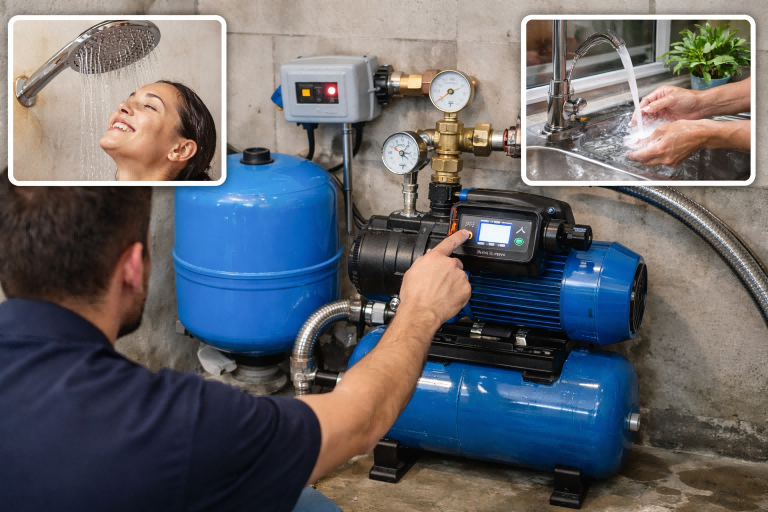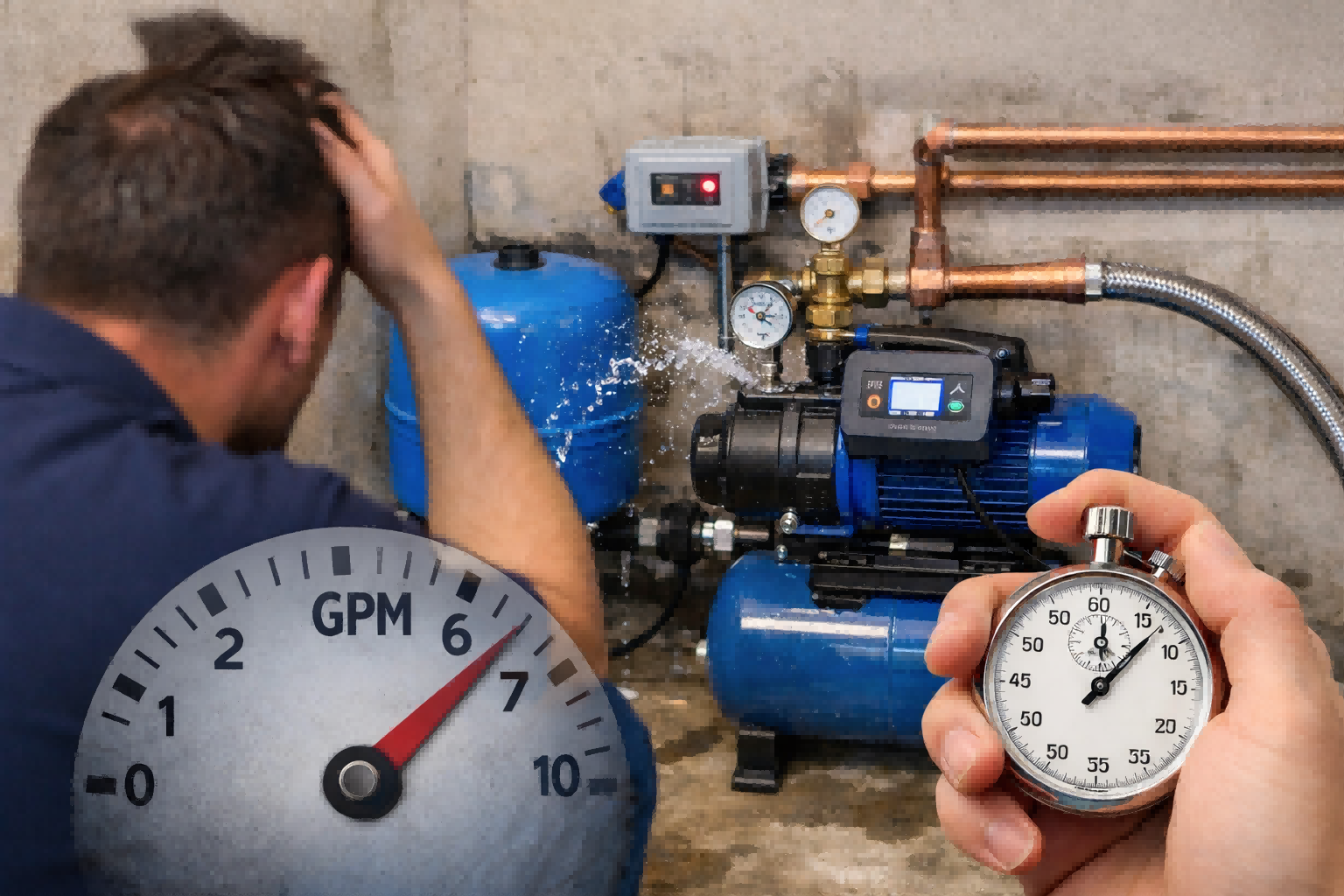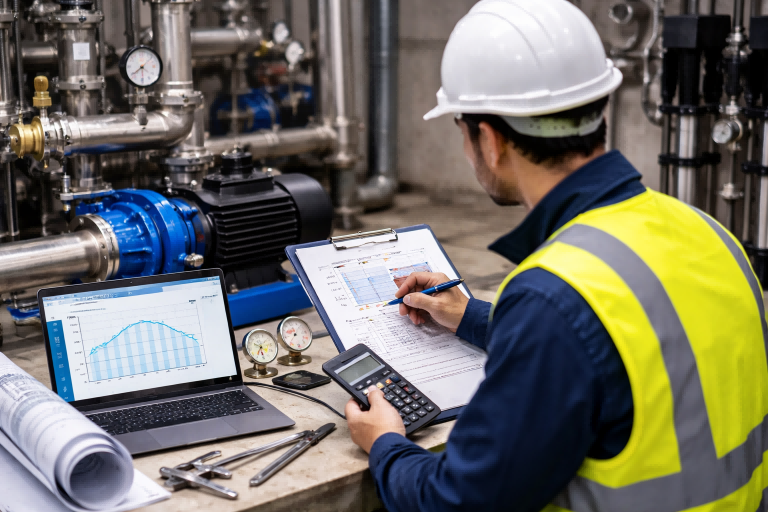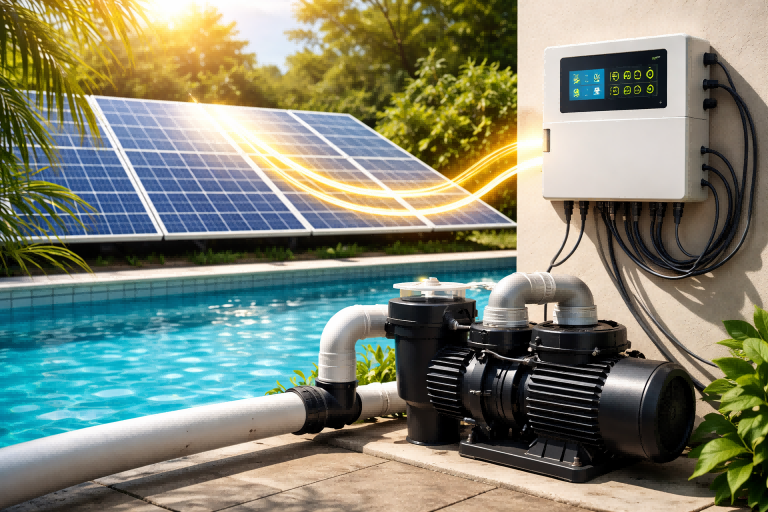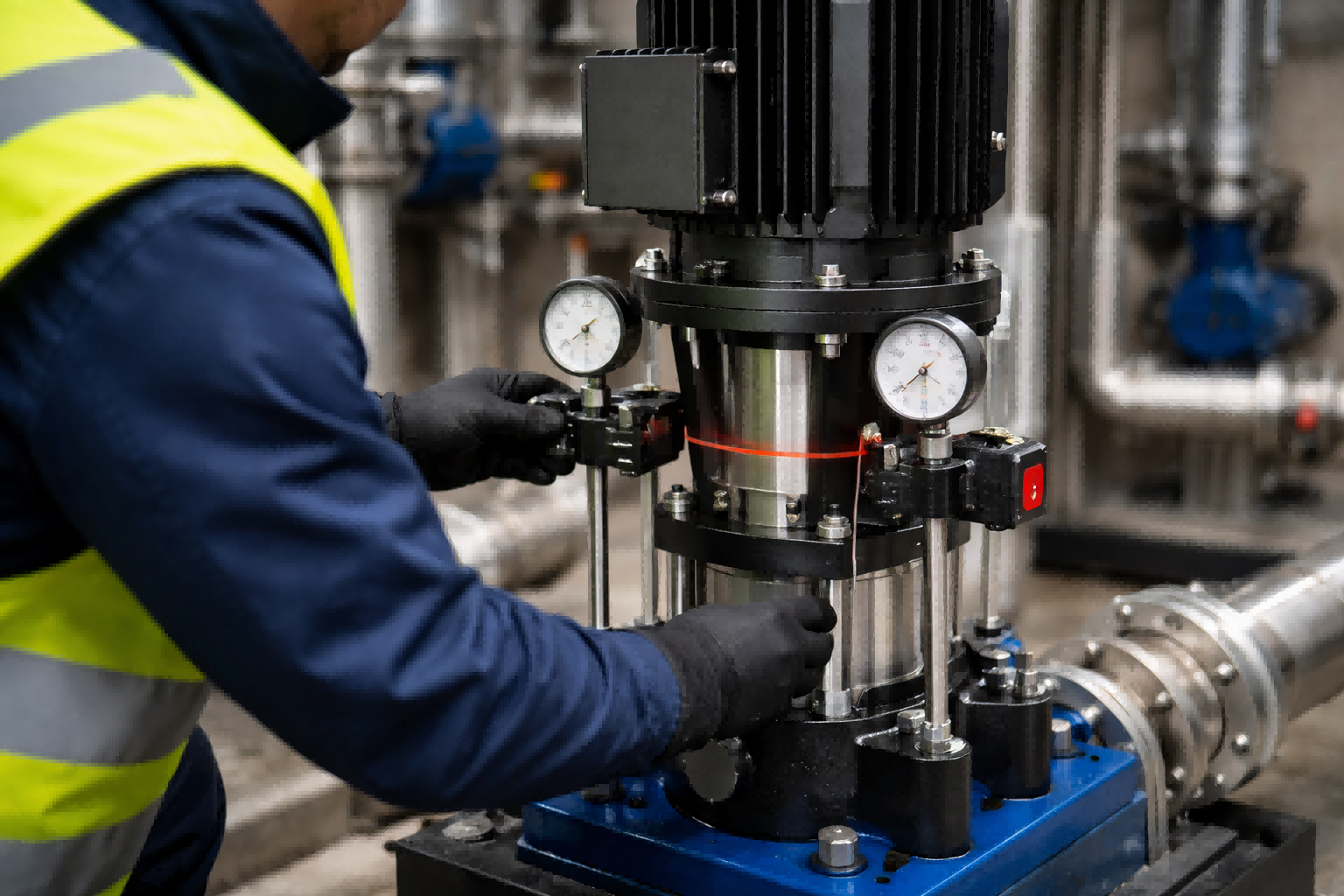An irrigation pump failure can devastate your crops and profits.
You need reliable equipment.
Understanding a pump's lifespan is key to safeguarding your agricultural operations and investments.
An irrigation pump's lifespan typically ranges from 8 to 20 years.
However, this varies greatly.
Factors like pump type, build quality, operating conditions, and maintenance frequency are crucial.
A well-maintained, high-quality pump can exceed 20 years, while a neglected one may fail sooner.
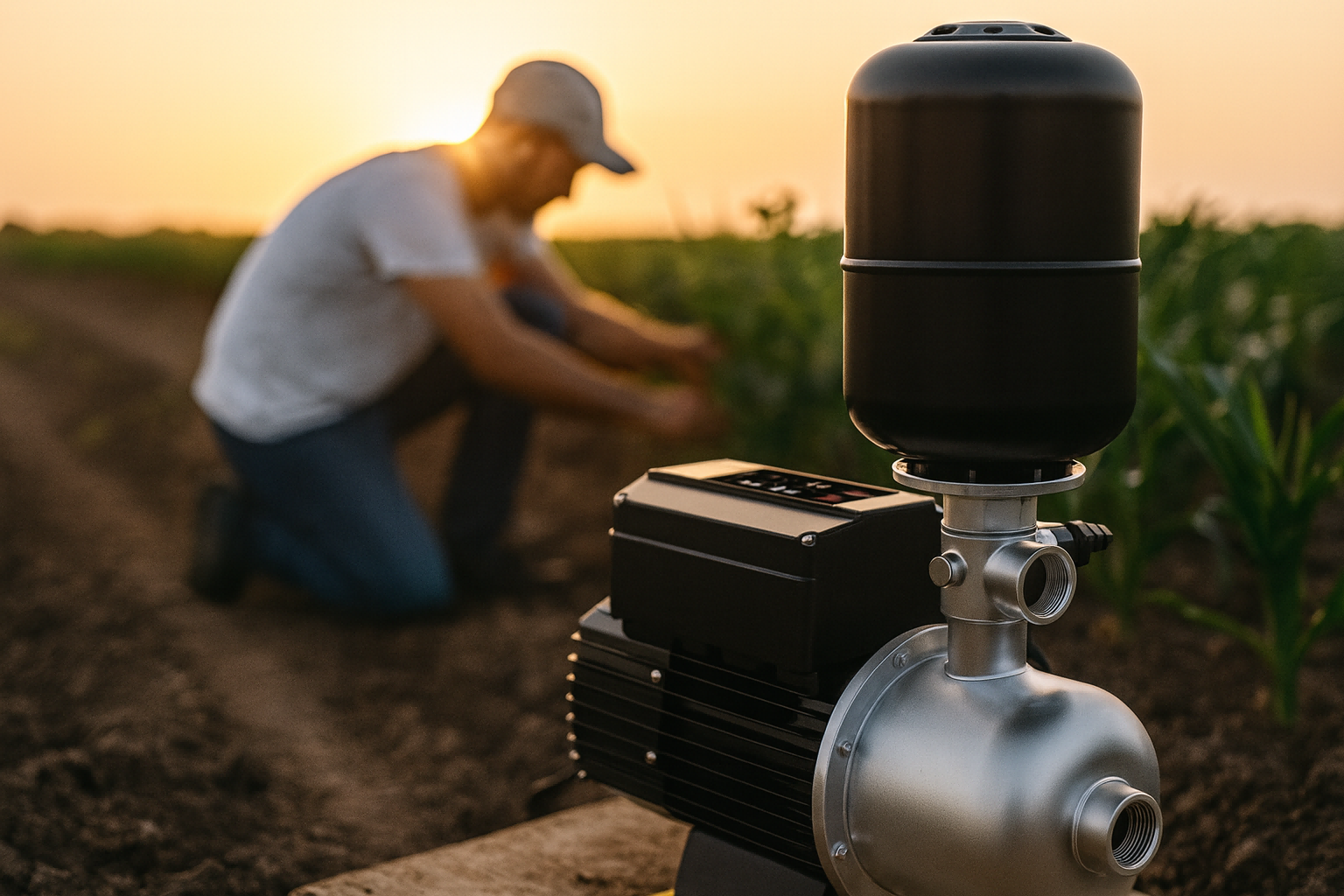
Understanding the expected service life of an irrigation pump is not a simple question with a single answer.
It involves a complex interplay of design, application, and care.
For business owners and importers, knowing these details is essential for sourcing high-quality, long-lasting products that build a reputation for reliability.
This knowledge allows you to guide your own customers toward making wise investments, ensuring their systems operate efficiently for years to come.
Let's explore the specific factors that dictate how long you can truly expect an irrigation pump to last and how to maximize that lifespan.
What Factors Determine Pump Lifespan?
Are you worried about unexpected pump failures causing costly downtime?
Neglecting key factors can shorten a pump's life.
Understanding these variables helps you invest in reliable, long-lasting equipment.
The lifespan of an irrigation pump is determined by its build quality, operating hours, water quality, and maintenance schedule.
High-quality materials resist corrosion and wear, while regular servicing prevents minor issues from becoming major failures.
Harsh conditions will shorten its life significantly.
The longevity of any irrigation pump is a direct result of several interconnected variables.
For a distributor, being able to articulate these factors demonstrates expertise and builds trust with clients.
It's not just about the pump itself; it's about the entire ecosystem in which it operates.
From the quality of the water it moves to the stability of the power it receives, every detail matters.
A comprehensive understanding allows you to source products that are not just good, but right for your specific market's conditions.
This deeper knowledge empowers you to offer better guidance, select more robust inventory, and ultimately, provide your customers with equipment that delivers real, long-term value.
Let's break down these critical components.
Build Quality and Material Selection
The foundation of a long-lasting pump is its construction.
Pumps made with inferior materials may be cheaper initially but often fail prematurely.
This leads to dissatisfied customers and damage to your business's reputation.
High-quality materials like stainless steel, cast iron, and durable composites are essential for longevity.
They provide superior resistance to corrosion, abrasion, and mechanical stress.
When evaluating a pump, consider the following materials for key components:
- Pump Casing: Cast iron offers excellent durability and pressure containment.
Stainless steel is superior for resisting corrosion, especially with aggressive water. - Impeller: Bronze or stainless steel impellers resist wear and corrosion far better than plastic alternatives.
Closed impellers are generally more efficient and durable in clean water applications, while open impellers handle solids better. - Mechanical Seal: This is a common failure point.
High-quality seals made from materials like silicon carbide or tungsten carbide offer a much longer service life than basic carbon-ceramic seals, especially in demanding conditions.
Operating Conditions and Workload
A pump's environment and how hard it works are just as important as its build quality.
A pump that runs 24/7 will naturally wear out faster than one that operates for only a few hours a day.
It is crucial to match the pump to the job.
An undersized pump will be overworked, leading to overheating and rapid wear.
An oversized pump will cycle frequently, causing stress on the motor, bearings, and electrical components.
Modern solutions like Variable Speed Drive (VSD) pumps excel here.
They adjust their speed to meet demand, preventing constant cycling and reducing mechanical stress, which can significantly extend the pump's life.
Water Quality and Its Impact
The water itself is a major factor in pump wear.
Clean, clear water is ideal.
Unfortunately, many irrigation sources are not so pristine.
| Water Contaminant | Impact on Pump | Recommended Material/Feature |
|---|---|---|
| Sand & Silt | Causes abrasion and erosion of impellers, seals, and casings. It's like sandblasting the pump's internals. | Hardened materials like silicon carbide for seals. Stainless steel or coated impellers. Consider a pre-filter or settling basin. |
| High Mineral Content | Leads to scaling and buildup on internal surfaces. This can clog passages, unbalance the impeller, and reduce efficiency. | Use of pumps with smooth internal passages. Periodic flushing with a descaling solution may be necessary. |
| Corrosive Elements | Chemicals, high salinity, or acidic water can corrode metal components, particularly cast iron and standard steel. | Choose pumps made from stainless steel (304 or 316 grade) or other corrosion-resistant alloys. |
Understanding your customers' water sources is key.
If they are dealing with abrasive or corrosive water, you must guide them toward pumps built with the right materials to handle those specific challenges.
This not only ensures the pump lasts longer but also reinforces your role as a knowledgeable and trusted supplier.
How Does Pump Type Affect Longevity?
Choosing the wrong pump type for a job is a recipe for disaster.
It leads to inefficiency, frequent repairs, and a short service life.
Matching the pump to the application is critical for ensuring durability and customer satisfaction.
Different pump types have inherently different lifespans.
For example, a robust centrifugal pump in clean water often outlasts a submersible pump in a sandy well.
The design and suitability for the specific irrigation task are major factors in its longevity.
The type of pump you choose is a foundational decision that profoundly impacts its service life.
Each design has strengths and weaknesses tailored to specific applications.
For importers and distributors, it's vital to stock a range of pump types to meet the diverse needs of your clients, from small-scale farming to large agricultural enterprises.
Advising a customer to use a surface centrifugal pump when a submersible deep well pump is needed will only lead to problems.
Your expertise in guiding them to the correct choice not only prevents premature failure but also optimizes their system's performance and energy efficiency.
This positions you as a solutions provider, not just a seller of boxes.
Let's examine how common irrigation pump types differ in terms of their expected longevity and ideal use cases.
Centrifugal Pumps
Centrifugal pumps are the workhorses of surface irrigation.
They are common, versatile, and relatively simple in design.
When installed and maintained correctly, they are known for their durability.
-
Standard End-Suction Centrifugal Pumps: These are widely used for pulling water from sources like rivers, lakes, or canals.
Their lifespan is heavily dependent on the quality of their bearings and mechanical seals.
With good maintenance, a high-quality cast iron or stainless steel model can easily last 15 to 20 years.
Their motors are typically separate and air-cooled, which helps with heat dissipation and simplifies servicing. -
Multistage Centrifugal Pumps: These pumps use multiple impellers to generate higher pressures.
They are ideal for drip irrigation systems or moving water over long distances or up steep inclines.
Because they operate at higher pressures, the quality of internal components is even more critical.
Well-built multistage pumps, especially those with VSD control to manage pressure, can have a service life of 12 to 20 years.
Submersible Pumps
Submersible pumps are designed to be placed directly within the water source, such as a well or sump.
This design provides several advantages but also unique challenges for longevity.
- Submersible Deep Well Pumps: These are essential for accessing groundwater.
Their primary advantage is that they push water to the surface rather than pulling it, which is much more efficient for deep sources.
However, their service life is highly sensitive to sand, silt, and overheating.
A submersible pump in a clean, deep well can last 10 to 15 years.
In a sandy or silty well, that lifespan can be cut in half if it's not a model specifically designed for abrasive conditions.
Because they are sealed units submerged in water, motor cooling is excellent, but repairs are complex and often require pulling the entire pump from the well.
Comparing Lifespan by Type
To make this clearer, let's compare the typical lifespan ranges under ideal versus challenging conditions.
| Pump Type | Ideal Conditions (Clean Water, Proper Use) | Challenging Conditions (Abrasives, Improper Sizing) | Key Longevity Factors |
|---|---|---|---|
| End-Suction Centrifugal | 15 - 20+ years | 5 - 10 years | Bearing quality, seal material, protection from elements. |
| Multistage Centrifugal | 12 - 20 years | 6 - 12 years | Internal tolerances, VSD control, water quality. |
| Submersible Deep Well | 10 - 15 years | 3 - 8 years | Sand/silt presence, overheating protection, voltage stability. |
As a supplier, your value comes from understanding these nuances.
When a client like Andrew in Australia asks for a "booster pump," you need to ask the right follow-up questions.
Is it for a well?
Is the water sandy?
What pressure do you need?
By guiding him to the correct multistage or submersible pump based on his answers, you ensure he gets a product that lasts, reflecting well on your brand and his.
The Critical Role of Proper Installation
A top-quality pump can be ruined by a poor installation.
This leads to immediate performance issues and drastically reduced lifespan.
Ensuring your customers get the installation right is vital for protecting your product's reputation.
Proper installation is not optional; it is essential for a long pump life.
This includes a stable foundation, correct pipe sizing, and proper electrical connections.
Skipping these steps guarantees premature failure, regardless of pump quality.
Even the most expensive, well-engineered pump will fail if it's not installed correctly.
Installation errors are one of the leading causes of premature pump failure.
As an equipment supplier, providing clear installation guidelines and technical support is a crucial part of your service.
It prevents callbacks, warranty claims, and unhappy customers.
When a customer invests in your product, they are also investing in the expectation that it will perform as advertised.
A successful installation is the first and most important step in meeting that expectation.
It sets the stage for years of reliable operation.
Let's break down the key areas where installation can go wrong and how to ensure it's done right.
The Foundation and Pump Housing
The pump must be set on a solid, level foundation.
Usually, this means a concrete pad.
An unstable base will cause vibrations.
- Vibration is the Enemy: Chronic vibration leads to a cascade of problems.
It causes premature wear on bearings, fatigues metal components, and can loosen electrical connections.
It can also cause the mechanical seal faces to misalign, leading to leaks. - Alignment is Key: For pumps with a separate motor (long-coupled), the alignment between the pump shaft and the motor shaft must be perfect.
Misalignment puts immense stress on the shafts, bearings, and coupling, guaranteeing a short service life. - Protection from the Elements: The pump and motor should be protected from direct rain, flooding, and excessive sun.
A simple but effective pump house or cover can add years to the life of the motor and electrical controls.
Correct Piping and System Design
The plumbing connected to the pump is just as important as the pump itself.
Poor piping practices can starve the pump of water or create excessive backpressure.
- Suction Line Sizing: The suction pipe diameter should never be smaller than the pump's inlet port.
In most cases, it should be one size larger to reduce friction and ensure the pump gets enough water.
A starved pump will suffer from cavitation. - Cavitation Damage: Cavitation occurs when there isn't enough pressure at the suction inlet, causing tiny vapor bubbles to form in the water.
As these bubbles pass through the pump to a higher-pressure zone, they collapse violently.
This implosion is powerful enough to chip away at the impeller, creating noise and damage that looks like erosion.
It's a primary cause of pump failure and is almost always due to poor suction-side design. - Keep it Short and Straight: The suction line should be as short and straight as possible.
Every bend, valve, or fitting adds friction.
Ensure all connections on the suction line are perfectly airtight to prevent the pump from drawing in air.
Electrical Connections and Protection
Faulty electrical wiring is not only a safety hazard but also a common cause of motor burnout.
Stable and correct power is non-negotiable.
| Electrical Component | Purpose and Importance |
|---|---|
| Correct Voltage | The motor must be wired for the available voltage. Incorrect voltage will cause overheating and rapid motor failure. |
| Wire Gauge | The wires supplying power to the pump must be thick enough (proper gauge) for the motor's amperage and the distance from the power source. Undersized wires cause voltage drop, which starves the motor of power and causes it to overheat. |
| Motor Protection | A motor starter with properly sized overload protection is essential. This device will shut off the motor if it starts drawing too much current, protecting it from burnout due to a jam, low voltage, or other fault. |
| VSD/Soft Starter | For larger pumps, a Variable Speed Drive (VSD) or soft starter is highly recommended. These devices reduce the massive inrush of current during startup, which reduces mechanical and electrical stress, significantly prolonging the life of the motor and pump. |
Providing a clear, easy-to-follow installation checklist with your products can be a game-changer.
It empowers the end-user or their installer to do the job correctly, ensuring the pump you supplied has the best possible chance at a long and productive life.
Maintenance: The Key to Maximizing Pump Life
Think you can "set it and forget it" with your irrigation pump?
This common mistake leads to unexpected breakdowns and expensive, urgent repairs.
Proactive maintenance is the only way to ensure reliability and maximize your investment.
Regular, planned maintenance is the single most effective way to extend an irrigation pump's life.
Simple tasks like checking for leaks, cleaning filters, and listening for unusual noises can prevent catastrophic failures and easily double the pump's operational lifespan.
An irrigation pump is a hardworking piece of machinery, not a maintenance-free appliance.
Just like a car, it requires regular attention to perform reliably and reach its full service potential.
For a B2B supplier, emphasizing the importance of maintenance is a hallmark of a quality-focused brand.
It shows that you care about the long-term performance of your products, not just the initial sale.
By providing clear maintenance guidelines, you empower your customers—distributors and end-users alike—to protect their investment.
This proactive approach reduces warranty claims, builds customer loyalty, and solidifies your reputation as a partner in their success.
A well-maintained pump is a testament to the quality of the product and the wisdom of the supplier who recommended it.
Creating a Routine Maintenance Schedule
A simple, consistent maintenance schedule is far more effective than sporadic, reactive repairs.
The best approach is to divide tasks into different time-based intervals.
This makes the process manageable and ensures nothing is overlooked.
Here is a sample schedule that can be adapted for most irrigation pump systems:
Weekly Checks:
- Visual Inspection: Walk around the pump.
Look for any leaks from the casing, pipe fittings, or the mechanical seal.
A small drip from a seal can quickly become a major leak. - Listen for Unusual Noises: You should be familiar with the normal sound of your pump.
Listen for any new grinding, rattling, or high-pitched whining sounds.
These are early warnings of bearing failure or cavitation. - Check Pressure Gauges: Note the suction and discharge pressures.
A significant change from the normal readings can indicate a blockage, a leak in the system, or internal pump wear.
Monthly Checks:
- Clean Filters and Strainers: The suction strainer and any inline filters should be cleaned.
A clogged strainer starves the pump of water, which can lead to overheating and cavitation. - Check Motor Temperature: Carefully check the temperature of the motor housing.
If it feels excessively hot to the touch, it may indicate a problem with ventilation, voltage, or failing bearings. - Inspect Mounting Bolts: Ensure the bolts holding the pump and motor to the foundation are tight.
Vibration can cause them to loosen over time.
The Importance of Lubrication
Bearings are at the heart of any rotating equipment, and proper lubrication is their lifeblood.
This is one of the most critical maintenance tasks.
- Grease-Lubricated Bearings: Many pump motors have sealed bearings that are "lubed for life."
However, larger or older models may have grease fittings (zerks).
These require periodic regreasing.
It's crucial to follow the manufacturer's recommendations for the type of grease and the amount. - The Danger of Over-Greasing: More is not better.
Over-greasing a bearing can be just as damaging as under-greasing.
Excess grease creates heat and can damage the bearing seals, allowing contaminants to enter.
Seasonal and Annual Service
Deeper maintenance should be scheduled during the off-season when the pump is not in constant use.
| Service Interval | Task | Purpose |
|---|---|---|
| Annual | Check and Adjust Alignment: For long-coupled pumps, check the shaft alignment. Settlement of the foundation can cause it to shift over time. | Prevents premature wear on bearings, seals, and the coupling. |
| Annual | Inspect Mechanical Seal: Visually inspect the seal for signs of excessive wear or leaking. | The seal is a critical wear item. Planning for its replacement is better than emergency failure. |
| Annual | Electrical System Check: Have a qualified electrician inspect all wiring, contactors, and overload settings. Check motor amperage draw to ensure it's within spec. | Ensures safety and protects the motor from electrical faults. |
| Seasonal (Pre-Winter) | Winterization: In climates with freezing temperatures, the pump and piping must be completely drained to prevent ice damage, which can crack the pump casing. | Prevents catastrophic failure due to frozen and expanding water. |
By providing your customers with a clear, actionable maintenance plan, you transform them from passive owners into proactive partners in equipment longevity.
Understanding and Preventing Common Failures
A pump failure during the growing season can be catastrophic.
Knowing what to look for can turn a disaster into a minor repair.
Recognizing the early warning signs of common failures allows for planned intervention, not panicked reactions.
The most common irrigation pump failures involve the mechanical seal, bearings, and motor.
These are typically caused by vibration, contamination, or electrical issues.
Proactive monitoring and maintenance are the best ways to prevent these problems from occurring.
Every piece of machinery has its vulnerabilities.
For irrigation pumps, a few key components bear the brunt of the operational stress.
As a supplier, your expertise is invaluable in helping clients not just buy a pump, but run it successfully.
This means educating them on the common points of failure and, more importantly, how to prevent those failures from happening in the first place.
Understanding why pumps fail allows you to source products with more robust components, such as superior mechanical seals or oversized bearings.
It also enables you to provide better technical support and stock the right spare parts, like those high-margin recurring sales Andrew's business model relies on.
This deepens your customer relationships and establishes your brand as a reliable, knowledgeable partner.
Mechanical Seal Failure
The mechanical seal is arguably the most common failure point.
It's a precision component that prevents water from leaking out along the rotating pump shaft.
- Causes of Failure:
- Running Dry: Even a few seconds of running without water can destroy a seal.
The water acts as a lubricant and coolant for the seal faces.
Without it, they overheat, crack, and fail. - Abrasives: Sand, silt, or other solids in the water act like sandpaper, grinding away the delicate seal faces.
- Vibration/Misalignment: Excessive shaft vibration or misalignment causes the seal faces to chatter and separate, allowing leaks.
- Chemical Attack: Corrosive water can degrade the elastomer (rubber) components of the seal.
- Running Dry: Even a few seconds of running without water can destroy a seal.
- Prevention:
- Install run-dry protection.
This can be a flow switch or a motor-load sensor that shuts the pump off if it loses prime. - For sandy water, use a pump with a silicon carbide seal, which is much harder and more abrasion-resistant than standard ceramic.
- Ensure the pump is on a stable foundation and the shafts are properly aligned.
- Install run-dry protection.
Bearing Failure
The bearings support the pump shaft, allowing it to spin smoothly with minimal friction.
When they fail, the entire pump is at risk.
- Symptoms of Failure: The first sign is usually noise—a grinding, rumbling, or squealing sound.
The second sign is heat.
A failing bearing will generate significant heat. - Causes of Failure:
- Lubrication Issues: Too little, too much, or the wrong type of grease.
- Contamination: Dirt or moisture getting past the bearing seals is a death sentence for a bearing.
- Vibration and Misalignment: This puts uneven and excessive loads on the bearings, causing them to wear out quickly.
- Excessive Belt Tension: On belt-driven pumps, overtightening the belts puts a massive side load on the motor and pump bearings.
- Prevention:
- Follow a strict lubrication schedule with the correct grease.
- Keep the area around the pump clean.
- Fix sources of vibration immediately.
- Ensure drive belts have the correct tension—not too tight, not too loose.
Motor Failure
The pump's motor is its powerhouse.
Motor failures are often electrical in nature and can be very costly.
| Motor Failure Mode | Common Cause | Prevention Method |
|---|---|---|
| Overheating | Low voltage, high voltage, poor ventilation, or overloading the pump. | Ensure proper wire gauge and voltage. Keep motor cooling fins clean. Ensure the pump is correctly sized for the application. |
| Winding Burnout | Can be caused by overheating, a power surge, or moisture in the windings. | Install properly sized overload protection. Use a phase monitor for 3-phase motors. Protect the motor from direct water spray. |
| Single Phasing | A 3-phase motor losing one of its three power legs. This causes the motor to draw immense current, burning it out in seconds. | Install a phase loss protector. This is a small investment that can save a very expensive motor. |
By educating your clients on these common issues, you empower them.
They learn to spot trouble early, perform preventative tasks, and understand the value of the higher-quality components in the pumps you supply.
This knowledge transforms the conversation from price to long-term value and reliability.
Conclusion
An irrigation pump's lifespan is not fixed.
It depends on quality, proper installation, and diligent maintenance.
A well-cared-for pump is a long-term asset, ensuring operational reliability for years.
FAQs
How do I know if my irrigation pump is going bad??
Listen for unusual noises like grinding or rattling.
Check for reduced water pressure, frequent cycling, or a motor that is hot to the touch.
These are early warning signs.
Can an irrigation pump be rebuilt?
Yes, many pumps can be rebuilt.
This typically involves replacing wear parts like the bearings, mechanical seal, and impeller.
It can be more cost-effective than buying a new pump.
How much does it cost to replace a well pump?
Costs vary widely depending on the pump type, well depth, and labor rates.
A shallow well jet pump might cost a few hundred dollars, while a deep submersible well pump can cost several thousand.
How often should you service an irrigation pump?
A basic visual and auditory check should be done weekly.
Filters should be cleaned monthly.
A more thorough service, including lubrication and electrical checks, should be performed annually.
Does a well pump use a lot of electricity?
Pump electricity usage depends on its size, efficiency, and run time.
Larger pumps and older, less efficient models can be significant energy consumers.
VSD pumps can reduce consumption by up to 50%.
What is the most common cause of pump failure?
Mechanical seal failure is one of the most common issues.
This is often caused by the pump running dry, abrasive particles in the water, or excessive vibration.
Can I install an irrigation pump myself?
A mechanically inclined person can often install a simple surface pump.
However, tasks like electrical wiring and submersible pump installation should be done by a qualified professional to ensure safety and proper operation.


